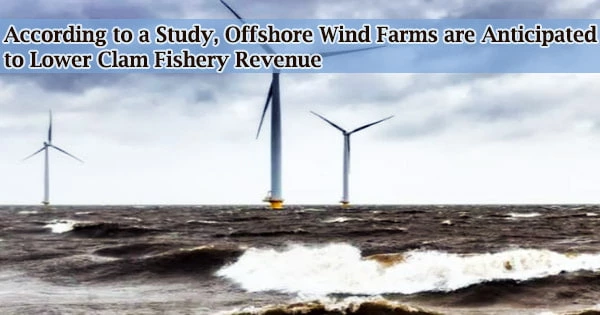Two Rutgers studies predict that the growth of offshore wind energy in the U.S. Northeast and Mid-Atlantic coasts will result in revenue losses for a significant East Coast shellfish industry.
The studies, which were published in the ICES Journal of Marine Science, looked at how offshore wind farms slated for the east coast of the United States might affect fishing for Atlantic surfclams, a significant source of direct annual revenue from Virginia to Massachusetts that brings in more than $30 million.
According to the studies, total fleet revenue decreases ranged from 3 to 15 percent, depending on the size of offshore wind construction and the fishing fleet’s reaction.
“Understanding the impacts of fishery exclusion and fishing effort displacement from development of offshore wind energy is critical to the sustainability of the Atlantic surfclam fishing industry,” said co-author Daphne Munroe, an associate professor in the Department of Marine and Coastal Sciences in the School of Environmental and Biological Sciences.
“Tools that can predict and manage these complex and interconnected challenges are essential for developing and evaluating strategies that allow for multiple users of the offshore environment.”
Munroe’s team developed the Spatially-Explicit Fishery Economics Simulator (SEFES), a computer model to assist in painting a thorough picture of stock dynamics, the fishery, and fishing fleet decision-making, to quantify the potential effects of offshore wind farms on Atlantic surfclam catches.
“SEFES is basically a virtual world that allows us to simulate the dynamics of the fishery from how captains navigate their boats to how weather impacts the catch,” Munroe said. “But the model also has a layer of biology, which accounts for the clam populations and how they change over time and in space.”
Understanding the impacts of fishery exclusion and fishing effort displacement from development of offshore wind energy is critical to the sustainability of the Atlantic surfclam fishing industry. Tools that can predict and manage these complex and interconnected challenges are essential for developing and evaluating strategies that allow for multiple users of the offshore environment.
Daphne Munroe
For instance, SEFES can explain how climate change is already shifting the distribution of clams northward. Munroe and colleagues closely consulted with the industry, including fishermen who offered insightful feedback, to fine-tune SEFES.
“We showed them how the model was working, and they told us if our assessments were right or wrong.”
To make sure the model was functioning properly, input from fishery managers and statistics from landings were also employed.
After calibrating the model, Munroe’s team set out to forecast how future wind farms will affect Atlantic surfclam fisheries. On the outer continental shelf as of 2021, about 1.7 million acres of ocean have been leased for offshore renewable energy projects.
The vessels that fish for Atlantic surfclams in these locations are required to operate in limited lanes or in methods that might be less productive than in unrestricted zones. SEFES can estimate the expenses associated with these modifications to fishing practices.
“If fishermen can’t fish in wind-leased areas, they will fish elsewhere in locations that might be less than optimal, changes that will mean longer trips and potentially smaller hauls,” said Munroe.
The U.S. Bureau of Ocean Energy Management supported the investigations, which also pinpointed the locations of the processors and fleets that were most at risk. Fleets with an Atlantic City base are at the top of the list. New Bedford, Massachusetts, was the simulation port that was least impacted.





